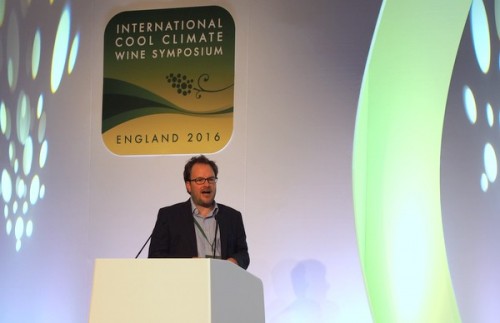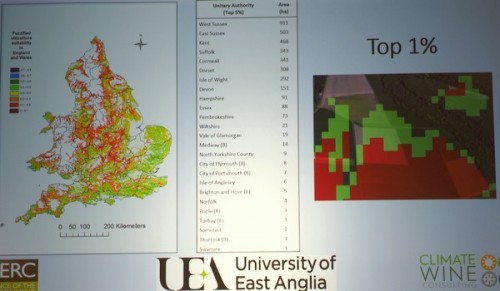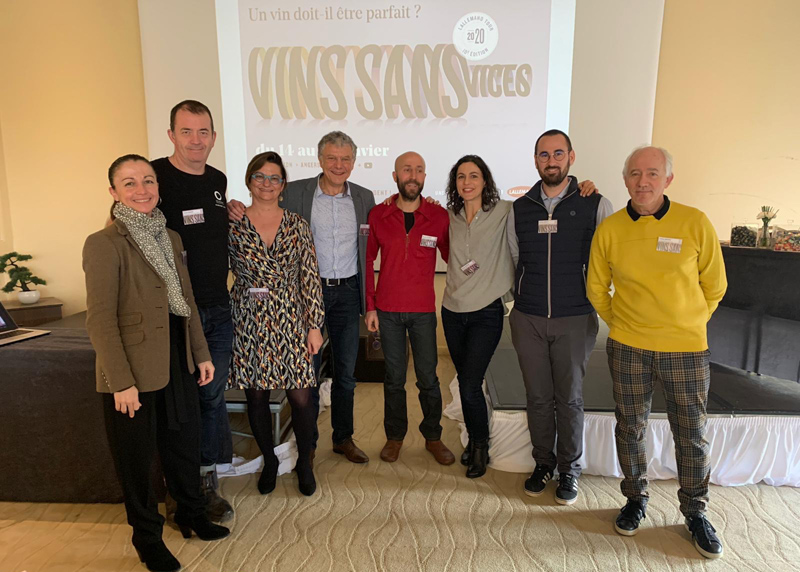
Alistair Nesbitt, from the University of East Anglia, has created a model that maps spatial climate variability in the UK, showing the suitability of various areas for viticulture in England and Wales. Over the period 1954-2015 there has been a non-linear warming trend for the growing season, and the amount of variability from season to season is quite high. But since 1993, every year has been above the 13 C minimum average temperature for the growing season that is usually regarded as the baseline for successful viticulture. But this doesn’t mean that every year has been successful: rainfall variability, for example, has had an important impact.
In order to see where in the UK might be best suited to viticulture, Nesbitt has created a map looking for areas that are less variable, but still suitable. He’s used a technique called ‘fuzzification’, which is a way of integrating data sets, and has worked on grids of 50 x 50 metres.
In the UK, of land that is currently described as arable (and therefore which potentially could be planted with vines), there are 1.4 million hectares that could be considered suitable for growing vines on the basis of temperature. And of these, there are 197 000 hectares of land suitable with limestone/chalk soils. In Hampshire alone, there are 17 000 hectares suitable for viticulture with limestone/chalk soils. This is quite exciting.
Then it’s possible to integrate other climate details into the model that further clarify which are the best sites. Factors such as frost risk, variability and rainfall levels affect the potential of a site. This gives a rating scale of suitability for viticulture.

Nesbitt points out that despite the comparisons that keep being made, there isn’t much of a comparison between the UK and Champagne. Over the last decade, the south of the UK has consistently been 1 C cooler than Champagne on average during the growing season, and also wetter. Where is most similar to southeastern England? It’s eastern Denmark, which shows an average difference of 0.1 C over the last ten years.
Nesbitt closed by suggesting that we need to pay more attention to future climate and weather patterns, and we also need to understand better the adaptive capacity of the vineyard. He also revealed that he has found the single field in the UK that is best suited to high quality viticulture, but he won’t say where it is.
A copy of a paper from Nesbitt’s PhD research is available here.
2 Comments on ICCWS 2016: Alistair Nesbitt’s model for identifying suitable vineyard sites in the UK

Perhaps the model needs some refinement, assessing predicted suitability of current vineyards against their (liquid) output. I know from discussion in the room at least 3 of the 28 IWC 2016 medals for still English wine come from a site above the apparent 120m altitude ceiling used in the model.
Doesn’t that say it all? That “he has found the single field in the UK that is best suited to high quality viticulture”.
If you could say that about France, Germany, Italy, Spain… you’d be the laughing stock of the day (or very rich).